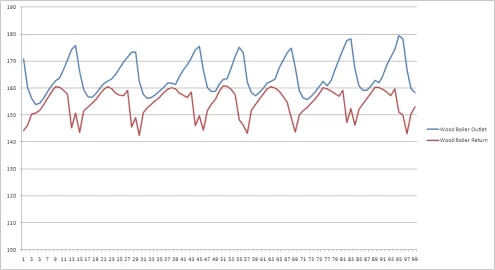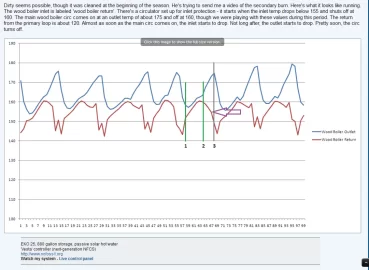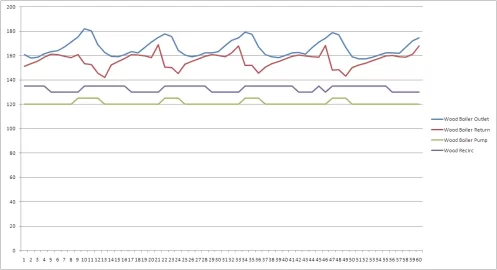I have a friend with an EKO 60 that doesn't seem to be working right. I haven't been able to see it in person, but it isn't putting out anywhere near as much heat as it should be. Secondary combustion is described as strong, although one nozzle is better than the other. There's no visible smoke. Flue temperatures (measured with a thermocouple) are around 500 . The circulator is a Grundfos 15-58 currently set on low speed. The boiler struggles to maintain a 10
. The circulator is a Grundfos 15-58 currently set on low speed. The boiler struggles to maintain a 10 delta T.
delta T.
By my calculations, at 75% output (150kbtu/hr) it should be able to maintain better than 35 gain at 8gpm (about the most you could expect from a 15-58 on low).
gain at 8gpm (about the most you could expect from a 15-58 on low).
I've sent links to threads here describing secondary tubes that need to be tack welded and secondary tubes that aren't aligned with the adjustment disc.
I've suggested a thorough cleaning of the HX tubes and lower chamber walls.
Any other thoughts about what could be happening?
 . The circulator is a Grundfos 15-58 currently set on low speed. The boiler struggles to maintain a 10
. The circulator is a Grundfos 15-58 currently set on low speed. The boiler struggles to maintain a 10 delta T.
delta T.By my calculations, at 75% output (150kbtu/hr) it should be able to maintain better than 35
 gain at 8gpm (about the most you could expect from a 15-58 on low).
gain at 8gpm (about the most you could expect from a 15-58 on low).I've sent links to threads here describing secondary tubes that need to be tack welded and secondary tubes that aren't aligned with the adjustment disc.
I've suggested a thorough cleaning of the HX tubes and lower chamber walls.
Any other thoughts about what could be happening?




